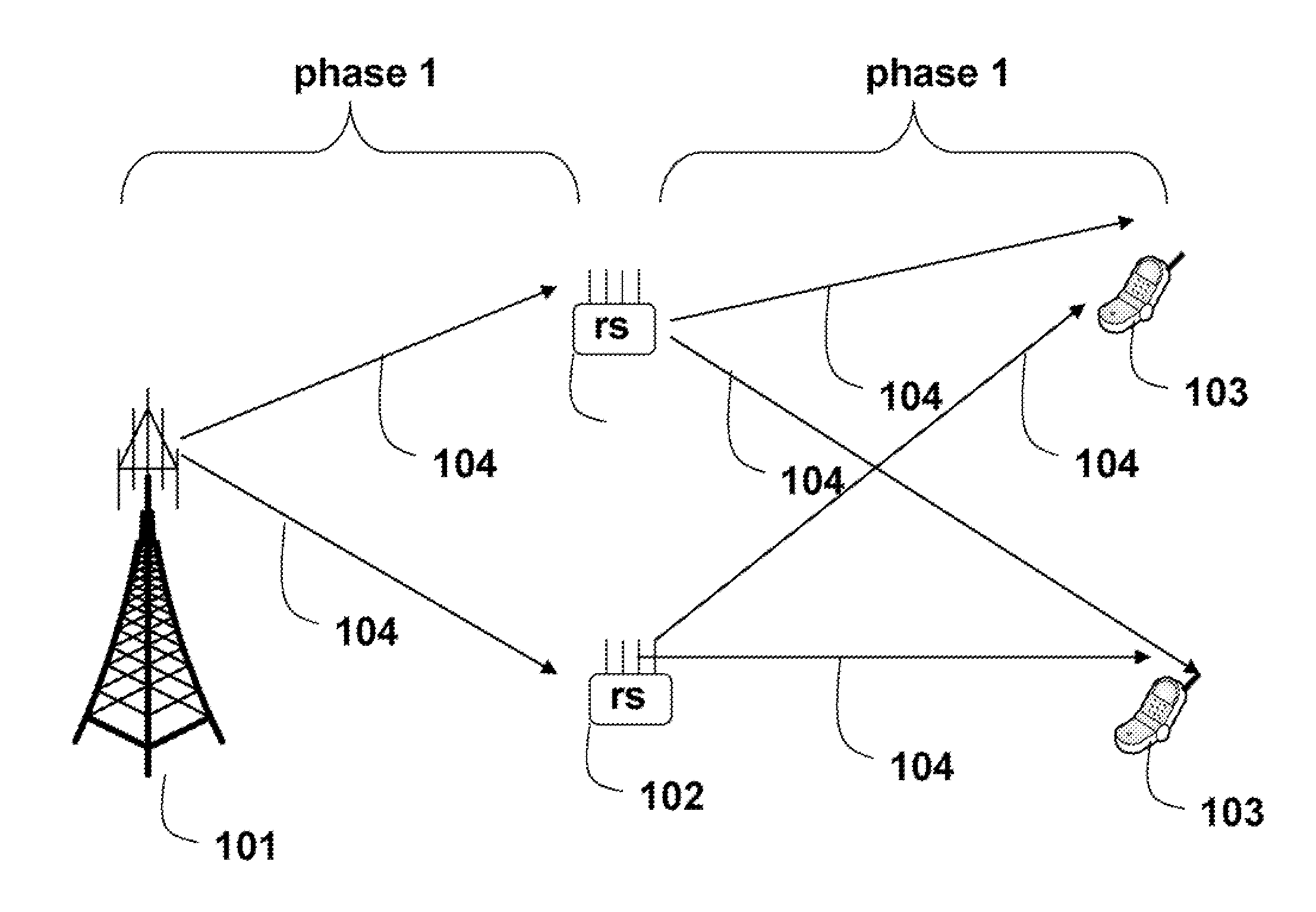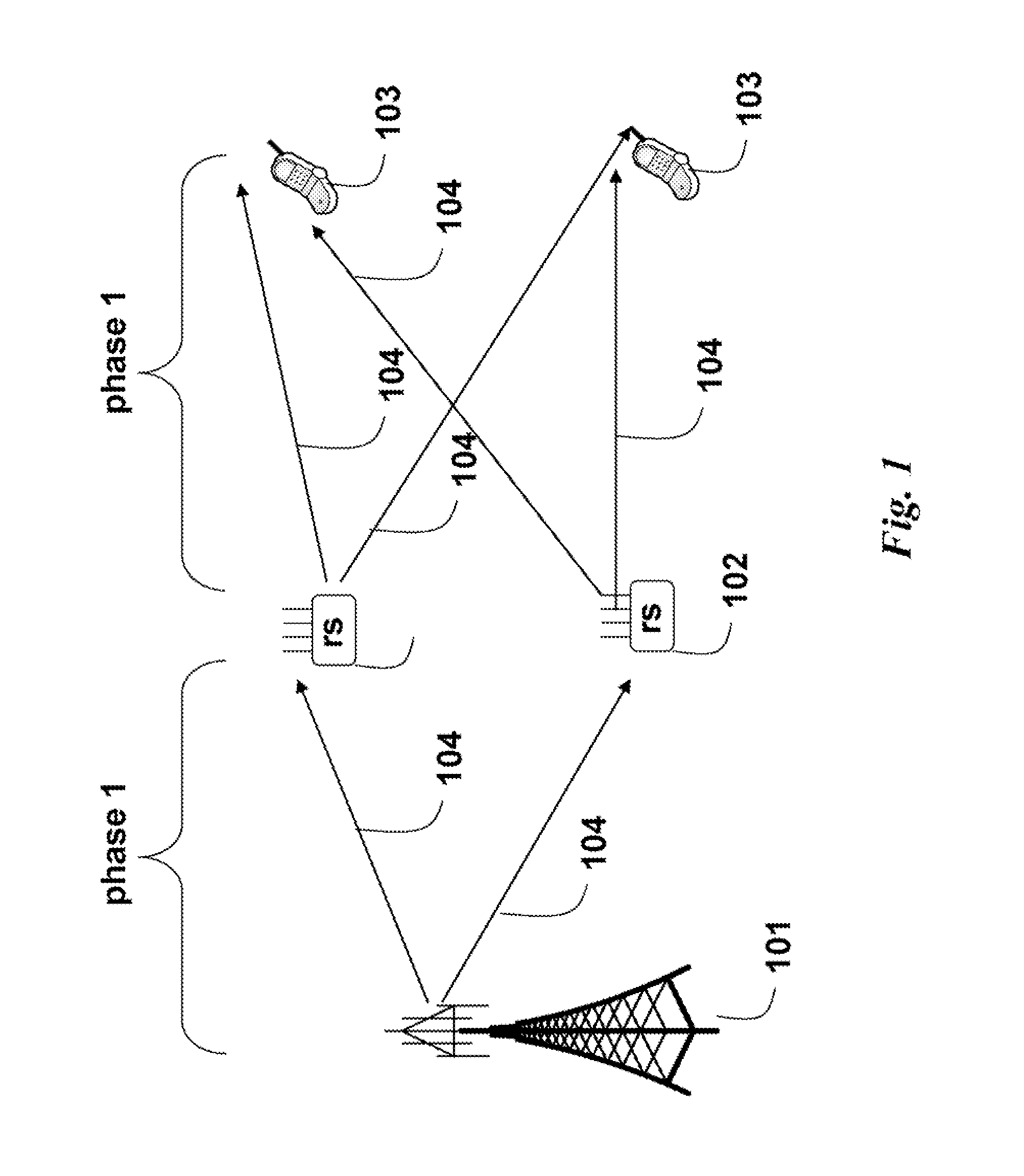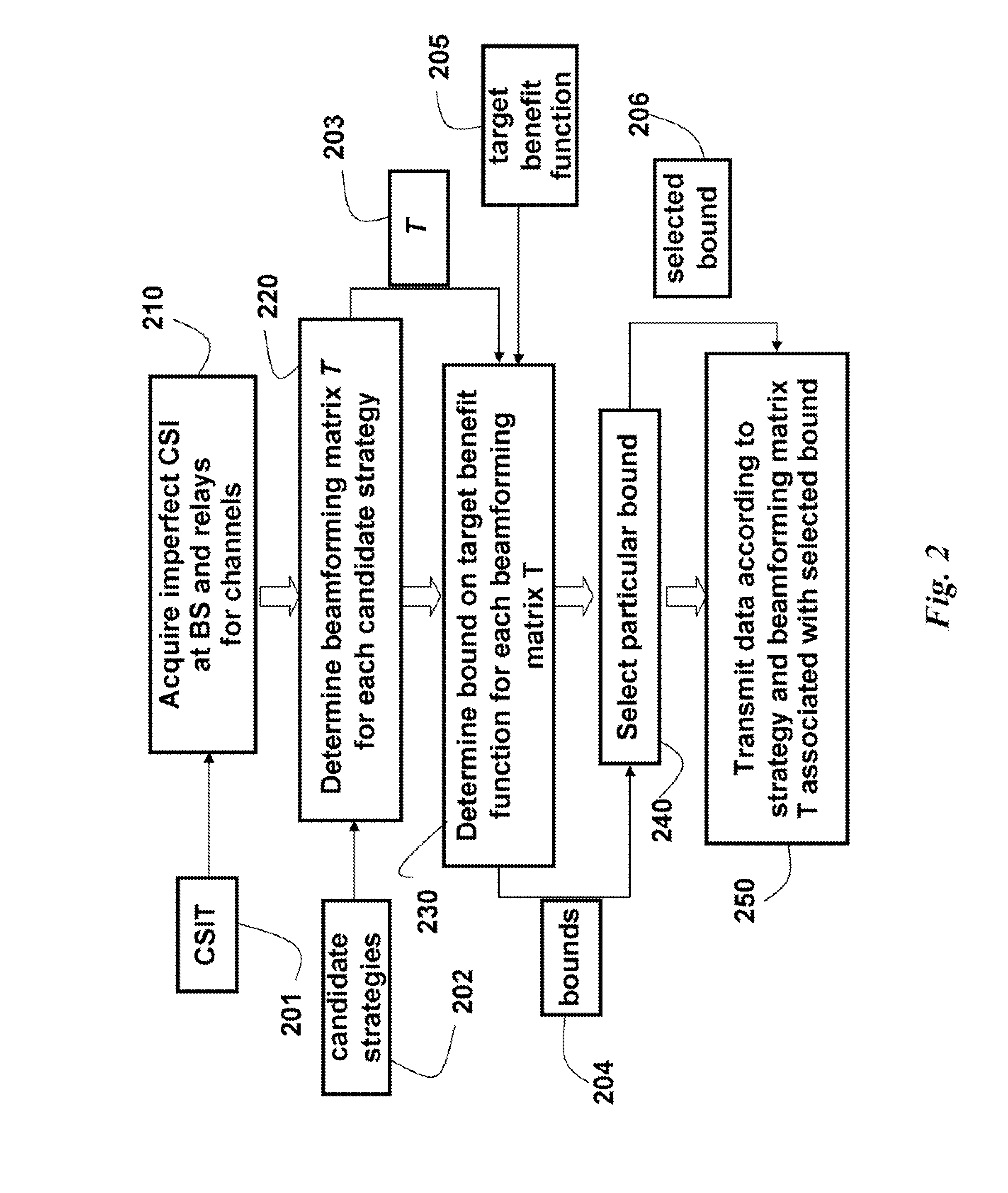Wireless Cooperative Relay Network Transmitting Data using Imperfect CSI
a relay network and imperfect technology, applied in the field of wireless communication networks, can solve the problems of not knowing whether relay cooperation can still provide any benefits, requiring perfect csi at the transmitter, and complex strategy, so as to improve the total network throughput
- Summary
- Abstract
- Description
- Claims
- Application Information
AI Technical Summary
Benefits of technology
Problems solved by technology
Method used
Image
Examples
Embodiment Construction
[0015]Cooperative Relay Network
[0016]FIG. 1 shows a wireless cooperative relay network of nodes (stations) according to an embodiment of our invention. In a preferred embodiment, the network is designed according to the WiMAX standard. However, it should be understood, that the embodiments of the invention can be used with other types of cooperative relay networks.
[0017]The network includes at least one base station (BS) 101, one or more relay nodes 102, and user nodes 103, e.g., mobile stations. The nodes communicate via wireless channels. Each channel includes a downlink and an uplink. The invention is particularly concerned with the downlink channels 104 from the base station to the relays, and from the relays to the mobile stations.
[0018]For simplicity of this description and as shown in FIG. 1, we assume a single base station, two relay stations and two mobile stations. We also assume the transmitters and receivers each, have one antenna. Extending this architecture to networks...
PUM
 Login to View More
Login to View More Abstract
Description
Claims
Application Information
 Login to View More
Login to View More - R&D
- Intellectual Property
- Life Sciences
- Materials
- Tech Scout
- Unparalleled Data Quality
- Higher Quality Content
- 60% Fewer Hallucinations
Browse by: Latest US Patents, China's latest patents, Technical Efficacy Thesaurus, Application Domain, Technology Topic, Popular Technical Reports.
© 2025 PatSnap. All rights reserved.Legal|Privacy policy|Modern Slavery Act Transparency Statement|Sitemap|About US| Contact US: help@patsnap.com



